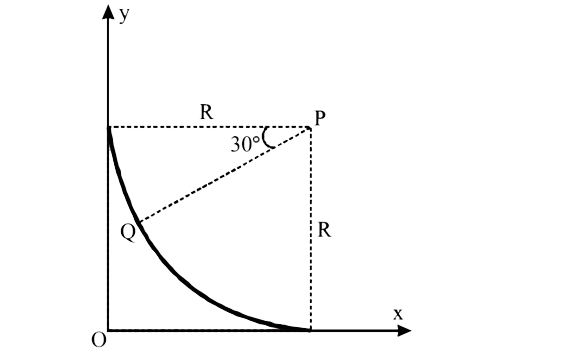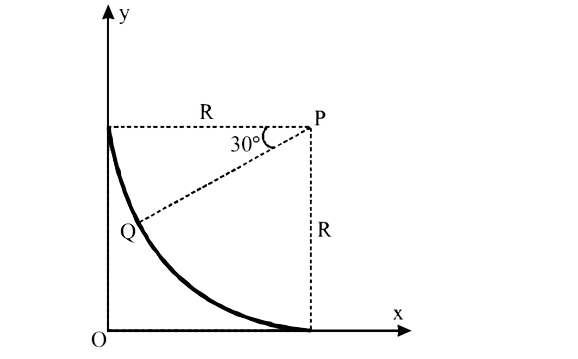Complete Solutions to PART I: PHYSICS SECTION-2: (Paragraph Type) of chapter JEE ADVANCED of Class 12 book with complete answers and questions
| Class 12 | PHYSICS |
| Chapter | JEE ADVANCED |
| JEE ADVANCED | PART I: PHYSICS SECTION-2: (Paragraph Type) |
| Number Of Questions | 6 |
| Academic Year | 2023-24 |
The mass of nucleus `._(z)X^(A)` is less than the sum of the masses of `(A-Z)` number of neutrons and `Z` number of protons in the nucleus. The energy equivalent to the corresponding mass difference is known as the binding energy of the nucleus. A heavy nucleus of mass `M` can break into two light nuclei of mass `m_(1)` and `m_(2)` only if `(m_(1)+m_(2)) lt M`. Also two light nuclei of massws `m_(3)` and `m_(4)` can undergo complete fusion and form a heavy nucleus of mass `M` ''only if `(m_(3)+m_(4)) gt M`''. The masses of some neutral atoms are given in the table below.
`|{:(._(1)^(1)H,1.007825u,._(1)^(2)H,2.014102u,),(._(1)^(3)H,3.016050u,._(2)^(4)H,4.002603u,),(._(3)^(6)Li,6.015123u,._(3)^(7)Li,7.016004u,),(._(30)^(70)Zn,69.925325u,._(34)^(82)Se,81.916709u,),(._(64)^(152)Gd,151.91980u,._(82)^(206)Pb,205.97445u,),(._(83)^(209)Bi,208.980388u,._(84)^(210)Po,209.982876u,):}|`
The correct statement is
View SolutionThe mass of nucleus `._(z)X^(A)` is less than the sum of the masses of `(A-Z)` number of neutrons and `Z` number of protons in the nucleus. The energy equivalent to the corresponding mass difference is known as the binding energy of the nucleus. A heavy nucleus of mass `M` can break into two light nuclei of mass `m_(1)` and `m_(2)` only if `(m_(1)+m_(2)) lt M`. Also two light nuclei of massws `m_(3)` and `m_(4)` can undergo complete fusion and form a heavy nucleus of mass `M` ''only if `(m_(3)+m_(4)) gt M`''. The masses of some neutral atoms are given in the table below.
`|{:(._(1)^(1)H,1.007825u,._(1)^(2)H,2.014102u,),(._(1)^(3)H,3.016050u,._(2)^(4)H,4.002603u,),(._(3)^(6)Li,6.015123u,._(3)^(7)Li,7.016004u,),(._(30)^(70)Zn,69.925325u,._(34)^(82)Se,81.916709u,),(._(64)^(152)Gd,151.91980u,._(82)^(206)Pb,205.97445u,),(._(83)^(209)Bi,208.980388u,._(84)^(210)Po,209.982876u,):}|`
The kinetic energy ( in `KeV`) of the alpha particle, when the nucleus at rest undergo alpha decay, is
View SolutionA small block of mass `1` kg is a circular are of ratius `40` m . The block sides along the track without topping and a frictionnal force acts on it in the direction opposite in the instrmens velocity . The work done in evercoming the friction up to the point `Q` as shown is the figure below is `150 J`
(Take the acceleration due to gravity `g = 10 ms^(-2))`

The speed of the block when it reaches the point `Q` is
View SolutionA small block of mass `1` kg is a circular are of ratius `40` m . The block sides along the track without topping and a frictionnal force acts on it in the direction opposite in the instrmens velocity . The work done in evercoming the friction up to the point `Q` as shown is the figure below is `150 J`
(Take the acceleration due to gravity `g = 10 ms^(-2))`

The magnitude of the normal reaction that acts on the block at the point `Q` is
View SolutionA thermal power plant produed electric power of 600kW at 4000V, which is to be transported to a place 20 km away form the power plant for consumer's usage. It can be transported either directly with a cable of large current carrying capacity or by sing a combination of step-up and step-down transfprmers at the two ends. THe drawback of the direct transmission is the large energy dissipation. In the method wsing transformers, the dissipatiion is much smaller. In this method a step-up transformers is used at the plant side so that the current is reduced to a smaller value. At the consumers'end, a step-down transformer is used to supply power to the consumers at the specified lower voltage. It is reasonable to assume that the power cable is purely resostive and the transformers are ideal with power factor unity. All the currents and voltagementioned are values.
If hte direct transmission method with a cable of resistance `0.4(omega) km^(-1)` is used, the power dissipation (in %) during transmission is
View SolutionA thermal power plant produed electric power of 600kW at 4000V, which is to be transported to a place 20 km away form the power plant for consumer's usage. It can be transported either directly with a cable of large current carrying capacity or by sing a combination of step-up and step-down transfprmers at the two ends. THe drawback of the direct transmission is the large energy dissipation. In the method wsing transformers, the dissipatiion is much smaller. In this method a step-up transformers is used at the plant side so that the current is reduced to a smaller value. At the consumers'end, a step-down transformer is used to supply power to the consumers at the specified lower voltage. It is reasonable to assume that the power cable is purely resostive and the transformers are ideal with power factor unity. All the currents and voltagementioned are values.
In the method using the transformers assume that the ratio of the number of turns in the primary to that in the secondary in the step-up transformer is 1:10 if the power to the consumers has to be supplied at 200V, the ratio of the number of turns in the primary to that in the secondary in the step-down transformer is
View Solution
PART I: PHYSICS SECTION-2: (Paragraph Type) questions and complete solutions for chapter JEE ADVANCED of JEE ADVANCED PREVIOUS YEAR of Class 12
All Exercises from JEE ADVANCED Class 12 PHYSICS JEE ADVANCED
- MULTIPLE CHOICE QUESTIONS
- PART I : PHYSICS (SECTION -1)
- PART I : PHYSICS (SECTION -2)
- PART I : PHYSICS (SECTION -3)
- PART I : PHYSICS (SECTION 1)
- PART I : PHYSICS (SECTION 3)
- Part I : PHYSICS (Section 3)Paragraph 2
- PART I: PHYSICS SECTION-2: (Paragraph Type)
- PART I: PHYSICS SECTION-3: (Paragraph Type)
- PART I: PHYSICS Section-3:(Matching List Type)
- PART I: PHYSICS (SECTION-1) (One or more options correct Type)
- PART-1 PHYSICS (SECTION 1 )
- PART-1 PHYSICS (SECTION 2 )
- PART-1 PHYSICS (SECTION 3 )
- PHYSICS
- PHYSICS SECTION - I : Single correct Answer Type
- PHYSICS SECTION - II : Multiple correct Answer Type
- PHYSICS SECTION - III Integer Answer Type
- PHYSICS SECTION - IV Matrix Match Type
- SECTION - 1 (ONE OR MORE THAN ONE OPTIONS CORRECT TYPE)
- SECTION - 1 (ONLY ONE OPTION CORRRECT TYPE)
- Section - I Single correct Answer Type
- Section - II (Multiple correct Answer Type)
- Section - III (Paragraph Type)
- Section - IV (Integer Answer Type)
- Section -(III) (Paragraph type)
- SECTION -1
- SECTION -2
- SECTION -2 ( ONE INTEGER VALUES CORRECT TYPE)
- SECTION -2 COMPREHENSION TYPE
- SECTION -3 (MATCHING LIST TYPE)
- Section -IV (Integer type)
- Section -IV (matrix type)
- SECTION 1
- SECTION 2
- SECTION 3 PARAGRAPH 3
- Section I : Single Correct Answer Type
- Section II : Paragraph Type
- Section III : Multiple Correct Answer(s) Type
- Section-1
- Section-2
- SECTION-I (Single correct Choice Type )
- Section-I (single correct choice type)
- SECTION-I( Single Correct Choice Type )
- Section-II (Integer type)
- SECTION-II ( Multiple Correct Choice Type )
- SECTION-II (Multiple correct Choice Type )
- Section-II (Multiple correct choice type)
- SECTION-III ( Comprehension Type )
- SECTION-III (Comprehension Type )
- Section-III (Paragraph)
- SECTION-IV (Integer Answer Type )
- SECTION-IV( Matrix-Match Type )